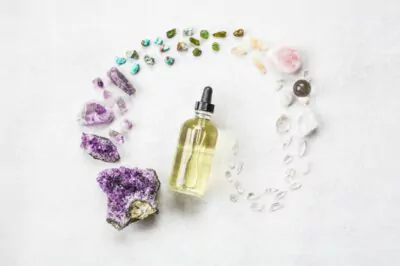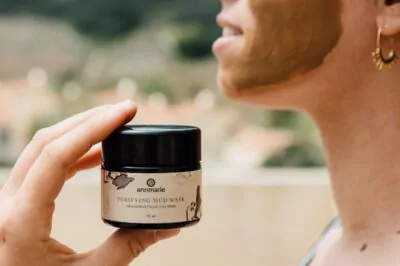Are you exfoliating? It’s one of the key steps in any skin care routine because without removing dead skin cells on a regular basis, products won’t work efficiently due to lack of absorption, your complexion becomes dull and lackluster, and pores become clogged—which can lead to breakouts. While scrubs and gommages are great for weekly use, adding a skin peel to your routine can take your skin to the next level.
Chemical peels get a lot of buzz because they claim to provide a deep exfoliation, even the appearance of the skin, create a smoother looking appearance, decongest pores, reduce the presence of dullness, encourage revitalized skin, and diminish the appearance of fine lines and wrinkles. The fact that they are touted by A-listers, celebrities, and jet-setters doesn’t hurt either.
The dangerous side of peels
But what you don’t hear about as much (but should) are some of the dangerous and unappealing side effects. These include include: redness that can last for several months; bacterial or fungal infections; scarring; changes in skin color/tone; and potential heart, kidney, and liver damage.
Not to mention, chemical peels cannot technically reduce pore size or eliminate extremely deep scars or wrinkles, according to research conducted by industry experts.
This leads us to why you should look to clean peels as a source of skin rejuvenation. If this is uncharted territory for you, we put together an easy guide to help you understand why natural peels are just as effective as chemical, the different options available, and how to choose the best one for your skin.
Added bonus: You’ll be saving money, too!
Different Types Of Clean Peels
Unlike chemical peels that require a visit to a doctor, licensed medical esthetician, or registered nurse, natural peels can be purchased as an over-the-counter treatment product, administered at a spa specializing in unrefined treatments, or in your own kitchen as it’s possible (and easy!) to make a DIY peel at home.
Here’s a look at the most popular forms of clean, natural peels.
Enzyme Peels
Enzymes are sustainable, organic materials comprised of proteins that serve as catalysts when a chemical reaction occurs in the body. While the enzymatic process is not as fast on the skin as it is on your insides, an enzyme peel can revitalize the appearance of mature skin, improve dullness, provide an instant glow, give your skin a fresh and revived look, encourage revitalized skin, and minimize the appearance of pores.
How do they work?
Unlike chemical peels, enzyme peels don’t remove healthy skin cells, only dead cells that contribute to a lackluster complexion. They are perfect for frequent (once a week) use for about 20-25 minutes per session.
Even better, enzymes are naturally prevalent in foods such as pumpkin, papaya, pineapple, honey, banana, avocado, mango, kiefer, miso, pomegranate, kimchi, Japanese mushrooms, and ginger. Y can easily whip up an inexpensive peel simply by mashing up one or more of these ingredients—easy and eco-friendly.
Am I Exfoliating Wrong? An Estheticians Guide on How to Exfoliate
Herbal Peels
While enzyme peels are great, sometimes they aren’t strong enough to see the results you may be seeking. That’s where an herbal/green peel comes in. It’s stronger than an enzyme peel, yet it’s still a safer option than going the chemical route. While you’ll have to visit a medi-spa or doctor to receive a treatment, it’s worth it because the results are long-lasting.
What is an herbal peel made of?
The peel is comprised of enzymes, tannins, mineral salts, proteins, vitamins, phytohormones, carbohydrates, and trace elements—no fillers or artificial ingredients whatsoever. When applied, microparticles from the herbs are absorbed into the skin and remain operative for an extended period of time, which is why the results last so long.
With an herbal peel, you can bring radiance to your look with little downtime and sans disproportionate discomfort. If you’re receiving a professional treatment, you can receive a lesser-strength peel once a week, but maintenance peels which tend to be stronger should only be performed once a month.
Organic Peels
An enzyme peel is technically a form of an organic peel. There are also stronger versions that contain natural ingredients that encourage exfoliation. These include lactic, salicylic, glycolic, and alpha hydroxy acids.
Organic peel ingredients
It’s not uncommon to find a formula that blends several of the aforementioned ingredients, as well as additional goodies such as vitamins, hyaluronic acid (for moisture), and various extracts to help target specific skin concerns.
Unlike green peels, you can find several organic peels for home use. There are spas that use professional strength versions as well. In terms of how the skin reacts (and how frequently you can use the product), it really depends on the strength and ingredient makeup of the peel.
Over-the-counter peels are typically safe enough to use once a week for about 15-25 minutes, while professional grade would need to be determined between you and your skin care expert.
Peel Precautions
Before experimenting with a new peel of any kind, make sure you conduct a patch test first so you can prevent a potential reaction. If you do experience excessive redness and/or discomfort, immediately remove the product and rinse the skin generously with cold water. Use a cold, wet washcloth as a compress if necessary.
Post Peel Care
Always follow-up any peel with a decent moisturizer and sunscreen if you’re going outdoors. It’s a good idea to avoid direct sunlight for approximately 72 hours. This is because your skin will be more sensitive and susceptible to burning. Skip the makeup as it can possibly irritate the skin and/or cause an infection. Don’t even think about exfoliating for several days (or more) as you just removed an abundance of dead skin cells. You’ll also have to forgo any form of exercise (casual walking is fine) for at least 24 hours as body heat can exasperate the results of the peel.
Lastly, if you’re taking any type of medication, speak to your doctor about your peel plans. Some meds can have an adverse reaction to certain ingredients in the formula.
Exercise Caution
While we believe that natural is better, even when it comes to more aggressive treatments such as peels, make sure you do your due diligence if you decide to try out a chemical peel.
Along with researching the type of peel, you’ll want to make sure you’re going to a doctor, medical esthetician, etc. with a good track record. So take some time to look into reviews or seek out a referral.
Am I Exfoliating Wrong? An Estheticians Guide on How to Exfoliate
Sources
“Chemical Peel,” Mayo Clinic, May 24, 2018,
https://www.mayoclinic.org/tests-procedures/chemical-peel/about/pac-20393473
“Enzyme Peel,” All About Cosmetology And Beauty, https://cosmetology-info.com/21/Enzyme-Peel/









Leave a Reply